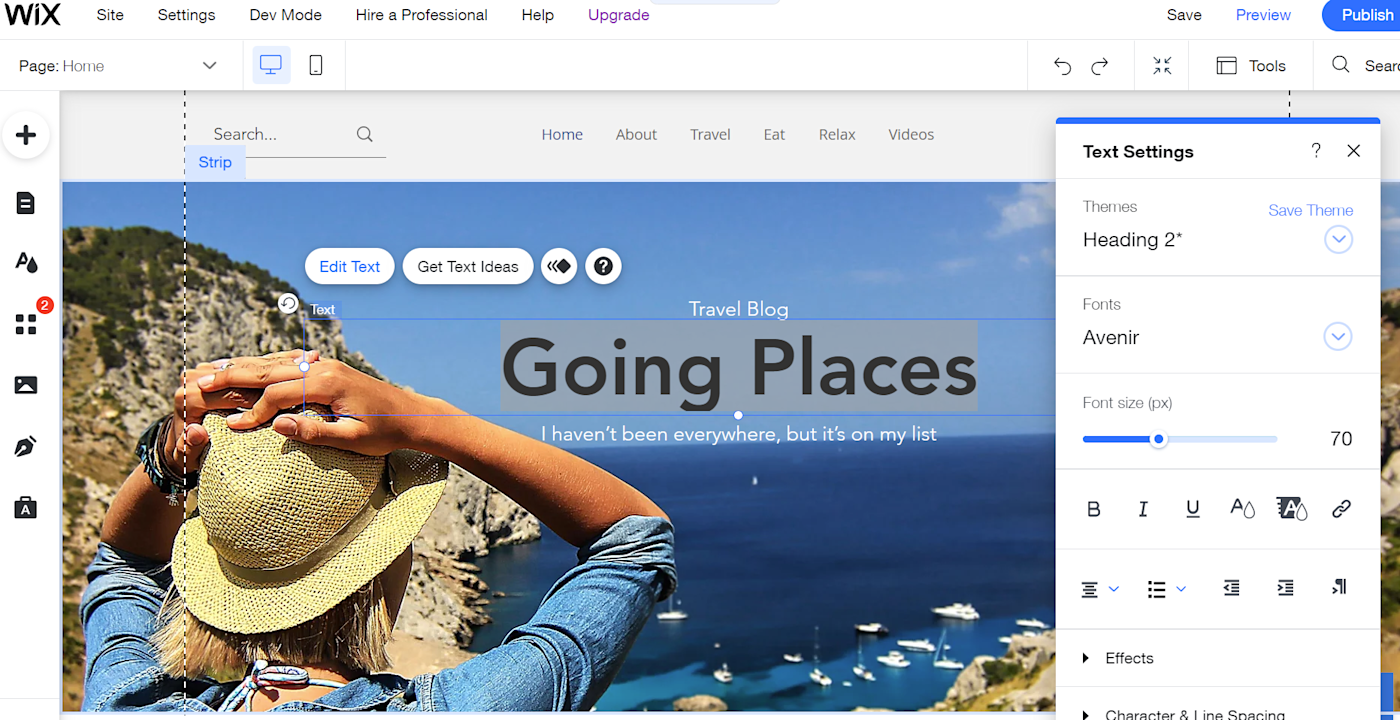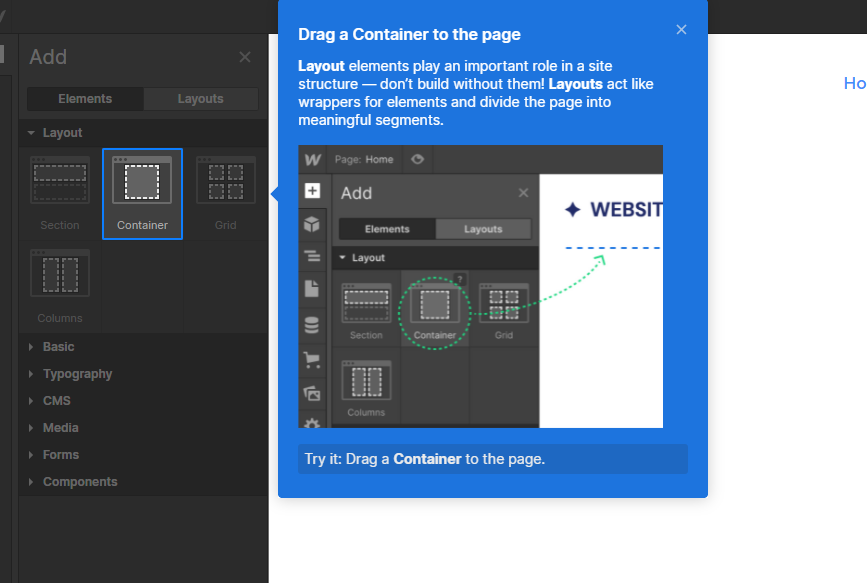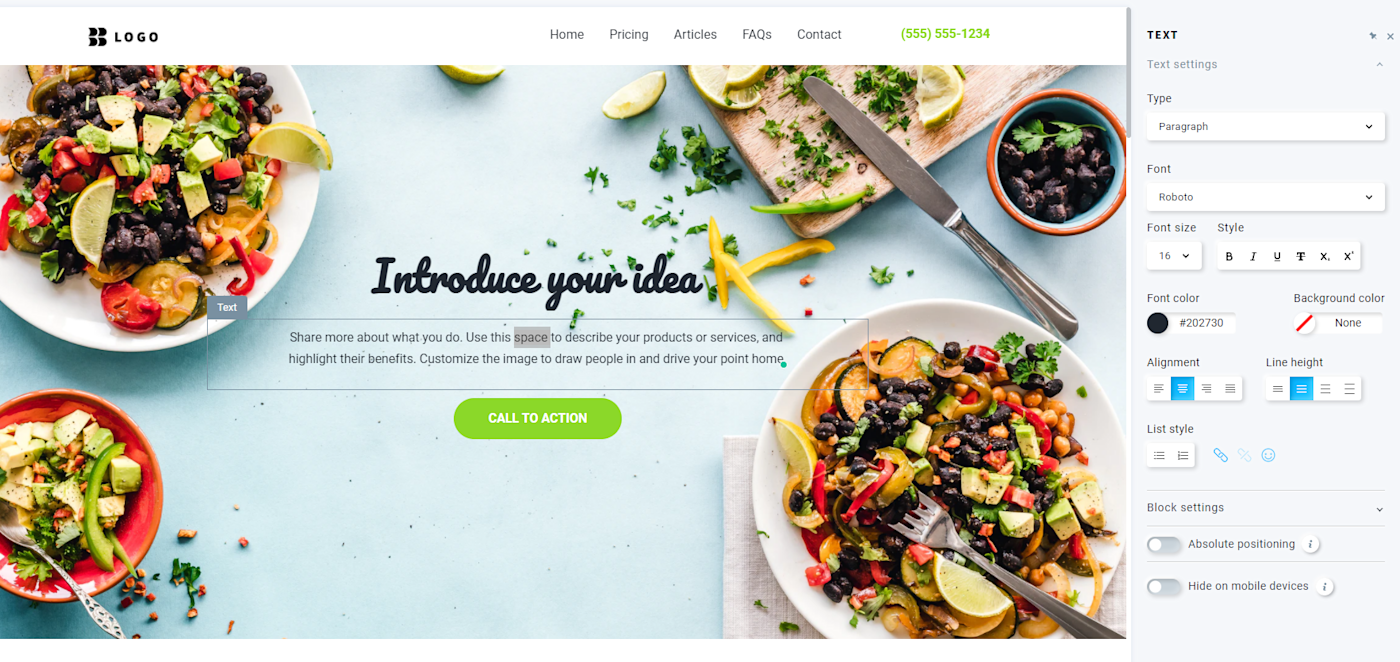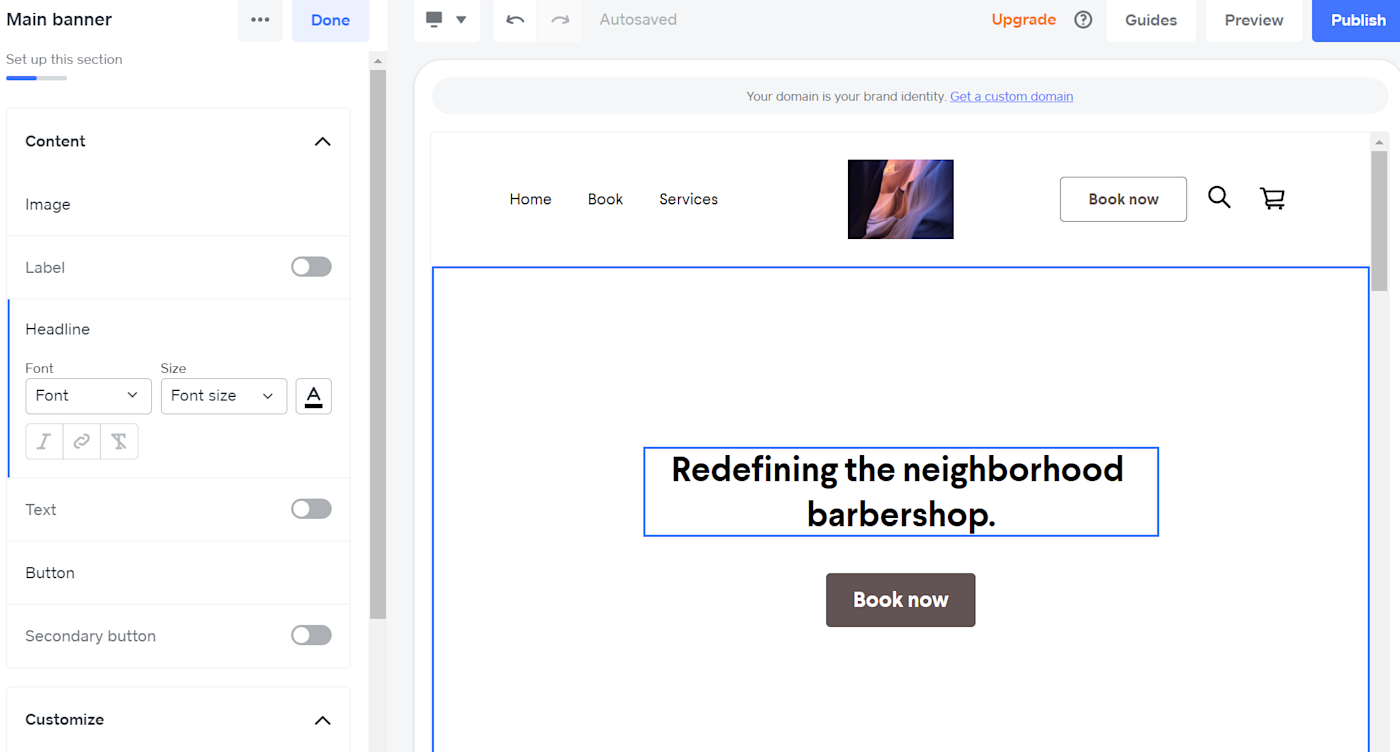If you want to be found online, you need a website. But most smaller businesses don’t have the budget to hire an expert developer. That’s where free website builders come in: these tools make it easy to build a website for free.
These apps do the heavy lifting for you: you don’t need to know what CSS is or how to tinker with HTML. I spent a few weeks testing all the free website builders I could find, and these are the five best.
The 5 best free website builders
What makes a great free website builder?
How we evaluate and test apps
All of our best apps roundups are written by humans who’ve spent much of their careers using, testing, and writing about software. We spend dozens of hours researching and testing apps, using each app as it’s intended to be used and evaluating it against the criteria we set for the category. We’re never paid for placement in our articles from any app or for links to any site—we value the trust readers put in us to offer authentic evaluations of the categories and apps we review. For more details on our process, read the full rundown of how we select apps to feature on the Zapier blog.
There are plenty of lists of the best free website builders, so what makes this one different? I didn’t just read customer reviews or the marketing materials for these website builders. I spent dozens of hours researching the best free site builders that users love—and then tested them out myself. I’ve used many of these tools in the past to build sites for myself or my clients, but I gave them all a fresh look by building a brand new site from scratch—adding pages, adjusting copy, exploring SEO features, uploading my own images, and trying to build a store.
Grow your business with marketing automation
Builders that were too hard to use or didn’t offer valuable free plans were eliminated, and the remaining ones were re-tested until I settled on the best of the best. Some are perfect for building a one-page site with no design experience at all, while others are ideal for creating a scalable eCommerce site that could give Amazon a run for their money…ish.
As I was testing, I was focusing on the following criteria:
-
Ease of use. Is the website builder easy to use, or do you need to be a junior dev to add a form? All the site builders on this list will be relatively easy for most users. I’ve mentioned which ones are newbie-friendly and which are better for those with a bit of design experience. None require coding experience, but some do let you access the code.
-
Customization options. Not all of us want a one-page website. I looked at how easy each builder is to customize, including the number of templates, if they offer drag-and-drop features, and whether you can adjust styles, colors, and elements. If there’s a trade-off between ease of use and customization, I’ve tried to make that clear.
-
SEO tools. Building a site is just half the battle—you also need to rank on search engines. I looked at the SEO tools each builder offers, such as the ability to adjust metas, add alt tags, and upload a site map.
-
Value of free plans. Is the free plan really free, or does the builder ask you to upgrade every time you make a change? I made sure I was only looking at truly free options. Of course, there will always be features you’ll need to upgrade for, but all of these tools let you launch a website for free.
Best free website builder for beginners
Wix

Wix is one of the most popular drag-and-drop website builders on the market—but is it worth the hype? If you’re looking to build a solid website with a few features, and don’t want to get bogged down in decisions, Wix is a solid choice.
Start by telling Wix what type of site you want, and any additional features you need, such as a blog, chat, forms, or an online store. Next, you’ll pick a template from more than 300 different designs, all broken down by type. They all look pretty professional and can be easily adjusted to fit your needs.
I did notice it loads a little slowly: it took a little over 10 seconds to load the template I chose. But once you get into the template to edit, you’ll see why—it’s a seriously robust editor for a free website builder. You can change fonts, add headings, include lists, and even drag and drop sections to build the exact site you want. No coding, no flipping through tabs. I found it quite intuitive to use (though I have used site builders for years).
Wix also offers tons of integrations, including email, so you can easily launch a digital marketing campaign right from your Wix dashboard. I was honestly amazed by the amount you can do for free. (Note: the available images are from Shutterstock, which you have to pay for. I didn’t see any free images, but you could search on your own and upload them.)
Not a copywriter? I am, but I know it’s easy to get stuck writing copy for your website. Wix suggests text, which is pretty awesome. Just tell them what you want to say, and they’ll make suggestions for how to make it sound good. They also offer detailed SEO features to help you rank on Google; it won’t replace hiring an SEO expert, but it’s a good leg up. You can even create a marketing calendar and manage ads all right in Wix. That’s perfect for business owners who don’t have the time or energy to learn a whole host of different platforms.
Once you’ve added pages, updated your copy, and made whatever other adjustments you like, it’s time to make your site live. For a free site, you’ll get a domain that ends with .wixsite.com (and there will be a Wix logo on it—pretty standard for free site builders). Of course, if you have your own domain, you can connect it.
As an added bonus, Wix integrates with Zapier, allowing you to do things like adding tasks to your project management tool or sending email campaigns based on triggered automations in Wix.
-
Wix pricing: Free plan available; paid plans start at $14/month.
-
Ease of use: Easy-to-use drag-and-drop editor. I found it intuitive, but beginners might get overwhelmed; if so, they also offer a free AI site builder option called Wix ADI.
-
Customization options: Very customizable—you can add forms, a blog, eCommerce features, and even create custom videos.
-
SEO features: Quite a few! Wix also does a good job of explaining what each feature does and walks you through each process, even for off-site tools like Google Analytics.
-
Value of free plan: Very good. While some builders try to make you upgrade on every other feature, most features are included to some degree with the free plan.
Best free WordPress alternative for tech-forward users
Webflow

I’ve noticed several clients choosing Webflow over WordPress over the last few months, so I was especially interested to try it.
Some of the free site builders on this list are super easy to use with hundreds of templates and drag-and-drop editors. That’s not Webflow. Once you create an account, Webflow asks who you are (marketer, website builder, etc.) and if you have experience with CSS/HTML. This is a great way for them to create a platform that’s easier for everyone to use—but it seemed to fall short. I tried creating a second account and said I was building a site for myself with no coding experience…and the onboarding was the same.
You can purchase a template that makes your site easier to build (similar to WordPress), and they offer an optional walk-through to familiarize you with the platform, which was quite helpful. If you’re comfortable with WordPress, you should be ok. But if you’re new to website builders, it might be hard to get your footing.
But there’s a reason for that: there are a lot of features and a ton of customization options. You can add containers, adjust the height, change fonts, add buttons, and on and on—center, stack containers horizontally, and much more. And if you know what to do with SEO, you’ll have access to everything you need, including H1s and meta descriptions. But they aren’t easy to find: for example, to add the meta description, you have to navigate to the main page panel, click on the page, click settings, and then finally you’ll see SEO settings.
Another thing I love about Webflow—which also makes it a good WordPress alternative—is the ability to expand site functionality with integrations and widgets for targeting, limiting spam, engaging customers, managing your CRM, and much more. It’s not the easiest platform to use, but it’s incredibly powerful for a free site builder.
Using Zapier, you can connect your Webflow site to other apps you use. Send new Webflow form submissions to a spreadsheet or email marketing tool, or even send emails when someone fills out a Webflow form.
-
Webflow pricing: Free plan available; paid plans start at $12/month.
-
Ease of use: Not easy for newbies. They do offer a walkthrough, or you can use a template, but if you’re looking for an easy drag-and-drop builder, Webflow isn’t it. If you’re comfortable with WordPress, you’ll be fine.
-
Customization options: Tons of customization options, but you’re building the site almost from scratch.
-
SEO tools: You can access everything you need, but they aren’t super obvious. Those who aren’t familiar with SEO may struggle.
-
Value of free plan: The free plan gives you access to all features, up to 50 CMS items, 1 GB of bandwidth, and a Webflow.io domain.
Best free website builder for email-focused businesses
GetResponse

Most of the free site builders on this list are standalone platforms. That’s because every tool out there seems to offer a free site builder—but most of them are terrible. You can throw together a half-decent site, but it won’t scale with you, and it probably won’t have the features you need.
But GetResponse—which is a more generalized marketing tool with a focus on email—offers a free site builder that’s pretty impressive. Start by telling it how you want to build your site, choosing a template or using the AI-powered builder. I chose a restaurant template, and it was easy to change all the basic elements like font, size, and images. On the pricing page, I could even change how far apart the buttons were, how they were aligned, and the line-height. And it let me hide pages on a mobile device with the click of a button.
I was impressed by the features, and it didn’t feel overwhelming at all. I didn’t have to search for things—just clicked to edit, and everything I needed was right there.
Oddly, on the marketing side, the tool is pretty bare-bones. You can easily optimize for mobile (there’s a whole tab for it), but SEO features are pretty limited: you can adjust the meta title and description, but that’s about it. Still, GetResponse is a strong contender for a free site builder, especially if you already use it for your email marketing or plan to focus on email marketing.
Want to do more with GetResponse? Connect it to Zapier to automatically add Facebook lead ads leads or PayPal customers to your GetResponse email list—and more.
-
GetResponse pricing: Free plan available; paid plans start at $15.58/month.
-
Ease of use: Very intuitive to use, especially for how much you can adjust.
-
Customization options: GetResponse offers hundreds of templates and easy drag-and-drop features in the templates.
-
SEO tools: Limited but sufficient. You can edit metas, alt tags, and optimize for mobile.
-
Value of free plan: Great. You can build and launch a site and manage up to 500 newsletter contacts—all for free.
Best free website builder for simple, no-fuss websites
Weebly

Weebly is Square’s free, more limited website builder. It’s ideal for simple websites, like a portfolio or blog—but you can’t do things like sell online or easily connect it to your social media accounts.
When you go to sign up, you’ll be presented with a page that basically asks if you want Weebly (personal websites) or Square Online (business websites). If you choose the personal option, you’ll get the bare bones you need with a really easy-to-use builder.
Just choose a template, then select different elements to edit. Each theme comes filled with text boxes, images, and named pages. And all of it is adjustable: you can edit everything with a click. Pictures are particularly easy to edit—you can even crop, adjust lighting, and add text right in the editor.
There aren’t as many templates as you’ll find in a tool like Wix, but the ones that are there are well designed. You can add buttons, contact forms, and slide shows, swap out images, insert a newsletter form, and add a map, all with the click of a button. Or you can use the Apps tab if you want to add additional features like Google Ads or forms. Most cost a few bucks, but they aren’t subscriptions, which is nice.
Your site also comes with SSL enabled, which is good for SEO, and Weebly makes it easy to change your favicon, the icon that appears in the browser tab for your website. If you want to view a mobile version of your site, just click the mobile icon in the top navigation. They also make it easy to add Google Analytics tracking codes. The SEO features were a little hard to figure out, even after reading through the documentation, but if you’re building a site on Weebly, you’re likely not doing it for SEO.
If you choose the free plan, your site will have Weebly branding and domain—standard for free site builders. The paid plans aren’t a great deal: just to connect a custom domain is $6/ month. So if you need more than this tool offers, I’d opt for their Square Online builder (which is next on our list).
-
Weebly pricing: Free plan available; paid plans start at $6/month.
-
Ease of use: Very intuitive. If you want to change something, just click on it.
-
Customization options: Not as customizable as other platforms, like Webflow, but that makes it ideal for someone who doesn’t have a ton of website experience.
-
SEO tools: Very basic, but better than some site builders that offer almost nothing.
-
Value of free plan: Decent, but not outstanding.
Best free website builder for building a scalable online store
Square Online

You might recognize the Square Online name from the little square-shaped phone plugin that small businesses often use to accept credit cards. Unlike other site builders (looking at you, WebStarts), building and launching an eCommerce site on Square Online is actually free. They don’t limit you to five items, they don’t limit you to payment types no one will use—it’s just plain free to build a site and integrate with their payment processor.
There is one caveat: while building your site is free, you will pay transaction fees when customers make a purchase. This isn’t unusual (processing fees are the norm), but Square is a bit more upfront about it than other builders that claim to let you build a “free” store.
The site builder doesn’t pull any punches on functionality. Once you log in, Square Online asks what you want to sell (physical items, menu items, tickets, memberships, services, etc.) and what type of site you want to build. The builder then provides a basic layout and walks you through customizing the logo, colors, and formatting. Once you complete that section, you’re set free to design your site by adding images, labels, headlines, images, text, and so on. It’s extremely customizable, which takes away a bit from the ease of use but is worth it to create a full-on store.
(One thing to note: you can’t move to the next step until you finish the first, which I didn’t realize at first. I’m used to being able to jump around in a site builder by clicking on the elements I want to change. I was a little confused when my clicks didn’t bring up an edit screen! But that structure did help curb any overwhelm.)
Square Online doesn’t offer fully-designed templates like other site builders. Everything is just about infinitely customizable. For someone with site-building experience, this level of customization is amazing, making it a great WordPress competitor. But if you don’t have website design experience, it might be a bit much.
SEO tools are a little hard to find (you have to exit out of the editor, then go to Website > SEO to adjust the SEO title, metas, and social media previews), but Square Online automatically generates a site map and helps you submit your site for indexing in Google and other search engines. (This can help them find and rank your site a bit faster, though search engines will find your site on their own.)
You can connect Square’s payment processor with Zapier to do things like automatically add new customers to an email list or save new transactions to a spreadsheet.
-
Square Online pricing: Free plan available (you’ll pay transaction fees); paid plans start at $12/month, plus transaction fees.
-
Ease of use: Not super beginner-friendly, but powerful.
-
Customization options: Extremely customizable. You can use the format templates (not fully designed like other site builders) or edit the code. They also offer widgets to expand customization.
-
SEO tools: Decent for a free builder. Can adjust metas, alt tags, and even submit to search engines for indexing.
-
Value of free plan: Very good. You have access to the full builder, unlimited products, shipping, square POS, SEO tool (they say—those are limited in my opinion), QR code ordering, and social selling. You do pay a transaction fee when you sell, but there’s no real way around that.
Should you use a free website builder?
If you’re launching a 1,000+ page eCommerce store or building a fully interactive app, you probably want to hire a developer—or at least pay for a fully-loaded website builder. But if you’re just starting out or need to sell a few items, these options will get the job done.
This article was originally published in August 2018 by Jeff Smith.
Need Any Technology Assistance? Call Pursho @ 0731-6725516





